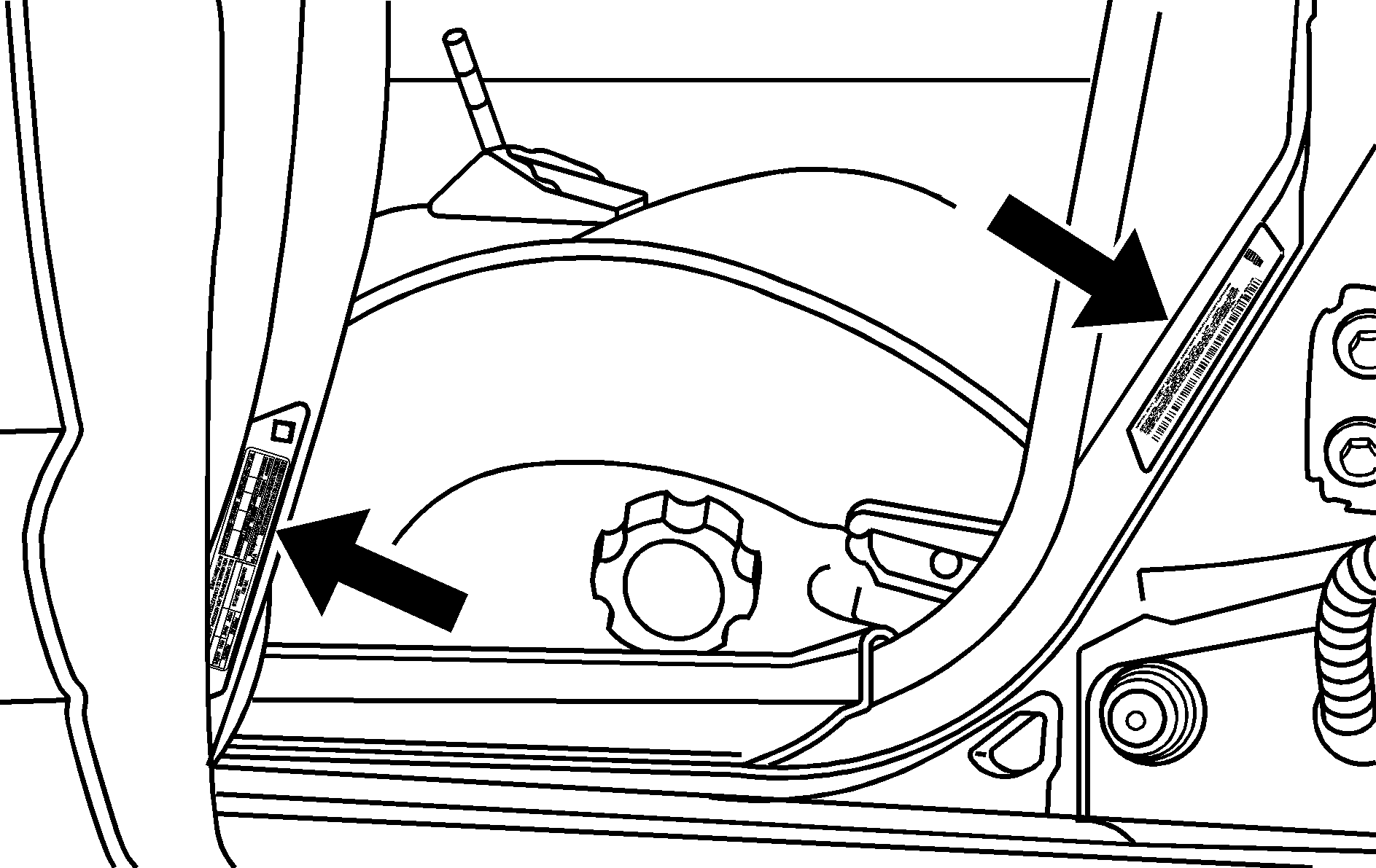
Two labels on your vehicle show how much weight your vehicle can carry. The Tire Loading Information Label located on the driver's door opening sill opening below the door striker (coupe) or the rear edge of the driver's door (sedan and wagon) tells you the proper size, speed rating and recommended inflation pressures for the tires on your vehicle. It also gives you important information about the number of people that can be in your vehicle and the total weight that you can carry. The weight is called the Vehicle Capacity Weight and includes the weight of all occupants, cargo, and all non-factory installed options.
A Tire Loading Information Chart can be found at the end of this chapter. Refer to this chart for more detail. For further information on this subject, see the Index under "Tire Loading".
The other label is the Vehicle Certification Label, found on the rear edge of the driver's door. It tells you the gross weight capacity of your vehicle, called the GVWR (Gross Vehicle Weight Rating). The GVWR includes the weight of the vehicle, all occupants and cargo. Never exceed the GVWR for your vehicle, or the Gross Axle Weight Rating (GAWR) for either the front or rear axle.
If you do have a heavy load, you should spread it out as evenly as possible.
Caution: Do not load the vehicle any heavier than the Gross Vehicle Weight Rating (GVWR), or either the maximum front or rear Gross Axle Weight Rating (GAWR). If you do, parts on the vehicle can break, and it can change the way your vehicle handles. These could cause you to lose control and crash. Also, overloading can shorten the life of the vehicle.
Notice: Overloading your vehicle may cause damage. Repairs would not be covered by your warranty. Do not overload your vehicle.
If you put thing inside your vehicle -- like suitcases, tools, packages, or anything else -- they will go as fast as the vehicle goes. If you have to stop or turn quickly, or if there is a crash, they'll keep going.
Caution: Things you put inside the
vehicle can strike and injure people in a sudden stop or turn, or in a crash.
• Put things in the trunk of your vehicle. In a trunk,
put them as far forward as you can. Try to spread the weight evenly.
• Never stack heavier things, like suitcases, inside
the vehicle so that some of them are above the tops of the seats.
• Do not leave an unsecured child restraint in the vehicle.
• When you carry something inside the vehicle, secure
it whenever you can.
• Do not leave a seat folded down unless you need to.
